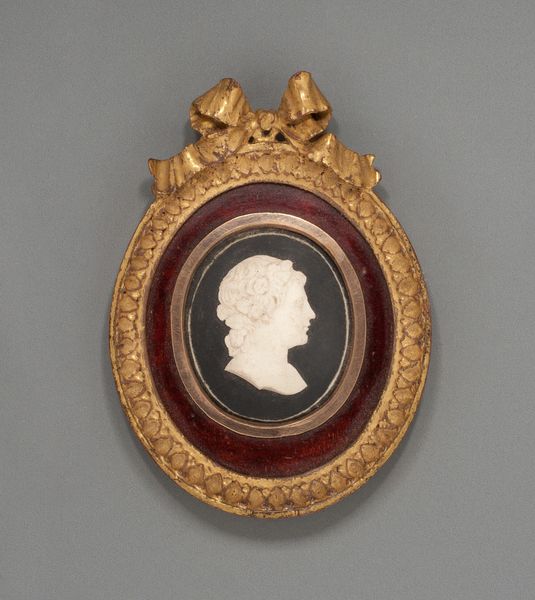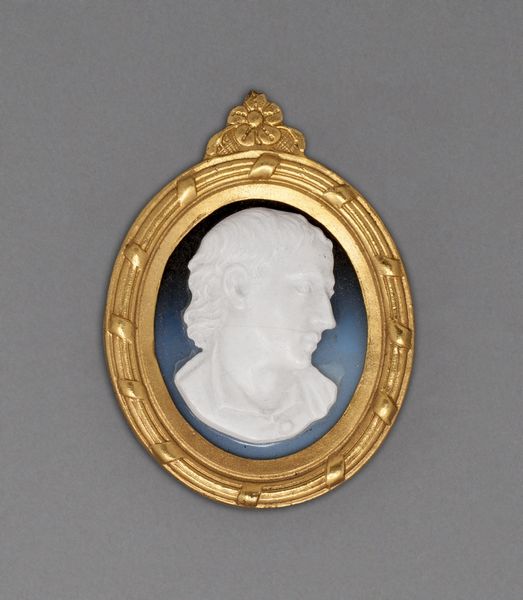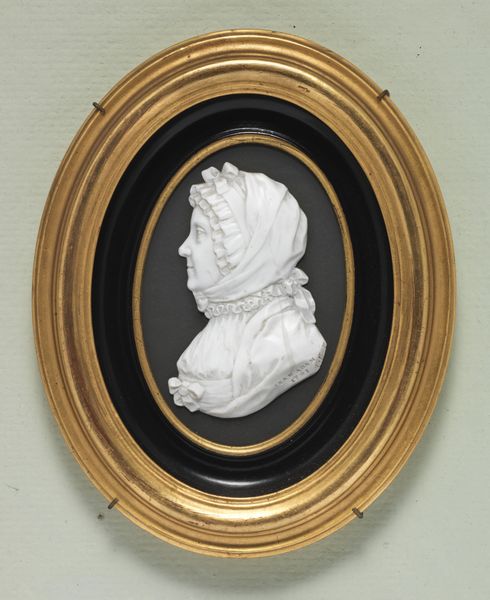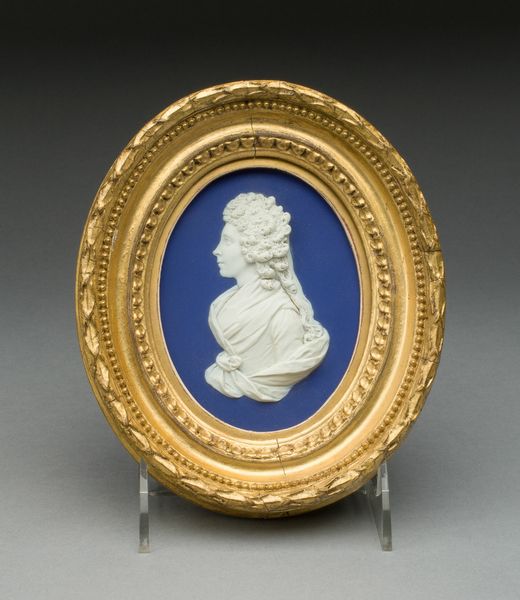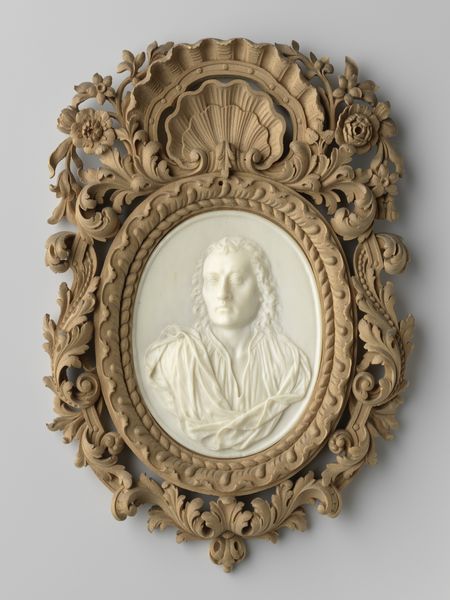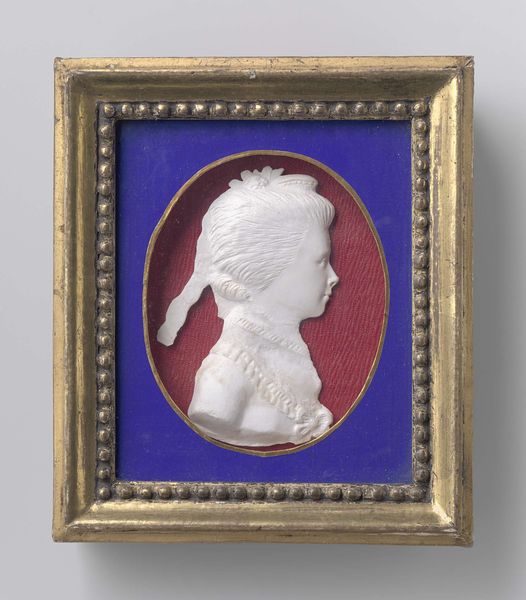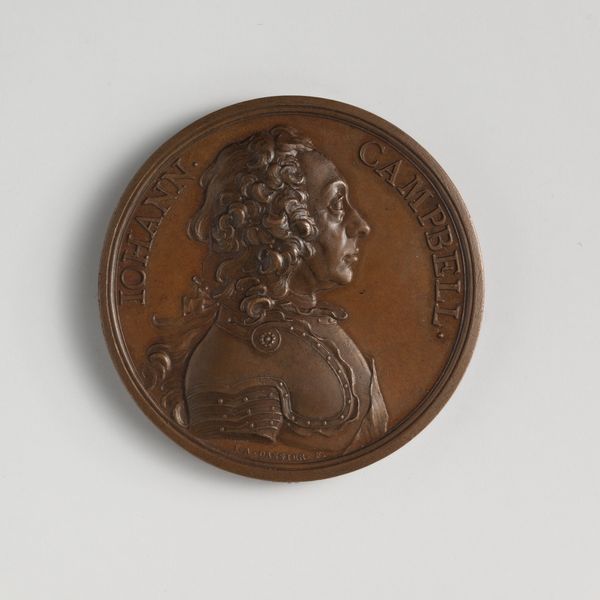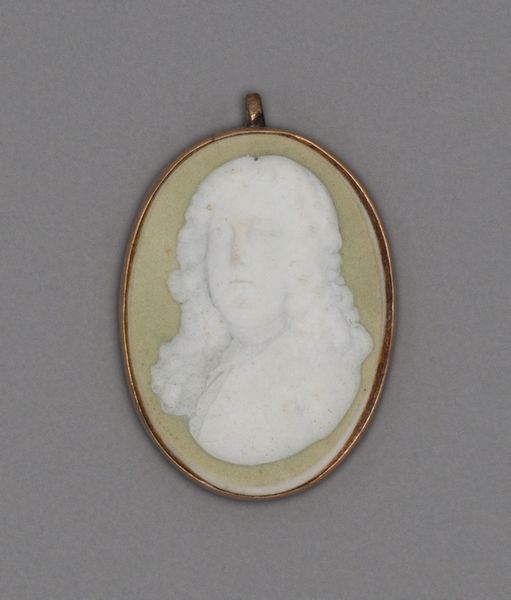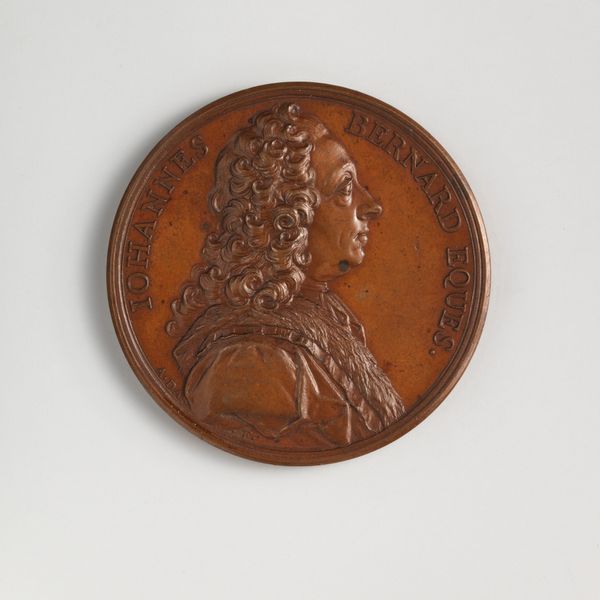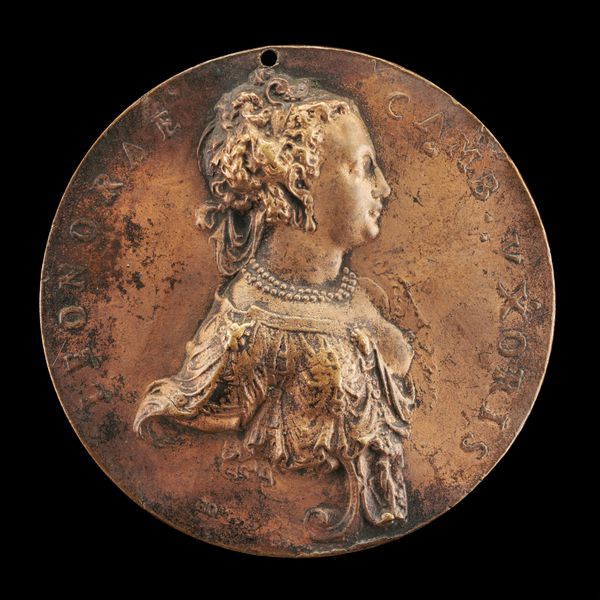
Portrait of Charles II in raised work embroidery 1670 - 1680
0:00
0:00
textile, sculpture
#
portrait
#
baroque
#
sculpture
#
textile
#
sculpture
#
decorative-art
Dimensions: H. 12 x W. 12 x D. 2 inches (30.5 x 30.5 x 5.1 cm)
Copyright: Public Domain
Editor: Here we have "Portrait of Charles II in raised work embroidery," created sometime between 1670 and 1680. It's currently housed at the Metropolitan Museum of Art. The textile medium gives it a strange dimensionality, doesn’t it? What story does this unconventional portrait tell, do you think? Curator: Absolutely. This piece is fascinating because it so overtly links craft with power, femininity with kingship. "Needlework" in the 17th century was profoundly feminized and domestic. So, to depict Charles II in this way challenges rigid notions of masculinity, power and gender. Doesn't this strike you as potentially subversive? Editor: That's a great point! I hadn’t considered the gender implications of the medium. Subversive in what way exactly? Was it commenting on his rule, perhaps? Curator: Perhaps indirectly. Think about Charles II's complex relationship with Parliament and his efforts to consolidate power after the English Civil War. To portray him in such a traditionally feminine art form creates a tension. It forces us to reconsider what constituted strength and authority in that period. Editor: It definitely adds a layer of vulnerability to his image, almost like he's open to being critiqued, picked apart even like a textile. I am still intrigued by the odd dimensionality; it really breaks with traditions, literally rising above the surface. Curator: It does! The very act of raising the image, lifting it off the flat surface, becomes a powerful statement. Is it elevating or undermining the king? The ambiguity itself is a political statement, inviting viewers to question the foundations of power and identity. Editor: It’s incredible how much we can unpack from a piece that I initially just thought looked a little odd! Thanks for sharing that perspective. Curator: My pleasure! Seeing art as an active participant in social dialogue truly enriches our understanding of both the past and present.
Comments
No comments
Be the first to comment and join the conversation on the ultimate creative platform.


